Unlock Persuasive Writing with Persuasion Maps

Have you ever found yourself staring at a blank page, struggling to organize your thoughts for a crucial presentation or a compelling essay? We’ve all been there. Whether you’re a student trying to ace that debate class, a professional aiming to win over clients, or an activist hoping to inspire change, the art of persuasion can sometimes feel like an elusive skill.
Enter the persuasion map – your new secret weapon in the world of convincing communication. Think of it as a GPS for your ideas, guiding you from your main argument to a powerful conclusion, with pit stops at well-supported reasons along the way. It’s like having a personal coach for your thoughts, helping you avoid those pesky logical dead-ends and keeping you on the path to a rock-solid argument.
In this guide, we’re going to explore how this simple yet powerful tool can transform your approach to persuasive writing and speaking. Whether you’re a novice looking to build confidence or a seasoned communicator seeking to sharpen your skills, get ready to discover how persuasion maps can be your ticket to more impactful, influential, and inspiring communication.

What is a Persuasion Map?
A Persuasion Map is an interactive tool designed to help individuals structure their arguments logically for essays, speeches, or debates. It serves as a graphic organizer, allowing users to map out their main thesis, supporting reasons, and evidence clearly and coherently. By visualizing arguments in a structured format, a persuasion map helps ensure that each point is logically connected and well-supported.
Historically and practically significant in various fields, persuasion maps enhance clarity and logical flow, making them invaluable in both academic and professional contexts. Whether you are a student crafting a persuasive essay, a business professional preparing a compelling presentation, or a programmer outlining a project proposal, a persuasion map simplifies the construction of your arguments. This tool aids in avoiding logical fallacies and helps in presenting a well-founded, convincing argument by
Streamlining the process of argument construction by connecting reasons and supporting evidence in a logical manner.
Aids in the creation of clear, structured thinking, ensuring each point is effectively communicated.
Enhances overall clarity, making the final output more organized and reliable.
For a comprehensive rundown on the uses and benefits of persuasion maps, check out our persuasion map templates .
- Ready to use
- Fully customizable template
- Get Started in seconds

Why You Need Persuasion Maps To Make Your Writing More Persuasive
Persuasive writing is a crucial skill that spans a multitude of domains, offering immense benefits and driving substantial impact. Utilizing a persuasion map tool can significantly enhance this skill. Here are some pivotal reasons why persuasive writing is essential:
Driving Business Success: Persuasive writing in the business realm often translates to compelling proposals, convincing presentations, and effective marketing strategies. It enables professionals to articulate their value propositions clearly, fostering improved sales and stronger client relationships.
Catalyzing Social and Political Change: Historically, persuasive writing has been a cornerstone of social movements and political reforms. It equips individuals with the power to influence public opinion, advocate for policies, and drive activism. Notable examples include landmark speeches and influential essays that have shaped societal norms and legislation.
Shaping Cultural Movements: Persuasive writing in literature, media, and art plays a significant role in shaping cultural narratives and public perception. It allows writers and creators to challenge existing paradigms, promote cultural awareness, and foster appreciation for diverse perspectives.
Power to Influence and Inspire: On a personal level, persuasive writing empowers individuals to express their thoughts compellingly, whether in professional emails, academic papers, or social media posts. It inspires and motivates audiences, driving engagement and action.
Incorporating a persuasion map can simplify the process of crafting persuasive content by providing a structured framework that emphasizes logical argumentation and coherent thought flow. This tool aligns with the professional and academic needs of users by enhancing clarity, organization, and reliability in their writing.
Types of Persuasion Maps
Persuasion maps are dynamic tools that play a crucial role in structuring arguments effectively. There are several types of persuasion maps, each catering to specific needs and use cases. Understanding these different types can help you choose the right one for your task. Here’s an overview of three popular forms:
Three-Reason Persuasion Map
A Three-Reason Persuasion Map is commonly used in academic settings such as essays and debates. It enables students to clearly outline their main argument and support it with three solid reasons. Each reason is backed by relevant facts or examples, helping to build a coherent and persuasive narrative.For instance, a student arguing for the benefits of school uniforms might list improved student behavior, enhanced sense of community, and cost savings as the three main reasons.
Concept Persuasion Map
The Concept Persuasion Map is designed to connect various subject concepts and knowledge points, making it ideal for educational purposes. It helps users remember and understand complex ideas by linking them with supporting definitions and evidence. This type of persuasion map is particularly useful for subjects that require deep understanding and connections between different concepts. Consider an educator explaining the importance of renewable energy; they could use a concept persuasion map to connect different energy sources, their benefits, and how they collectively contribute to environmental sustainability. This enables a deeper understanding and retention of complex subject matter.
Project Performance Map
The Project Performance Map is a valuable tool for business professionals. It illustrates the factors affecting a project’s performance, such as key reasons, risk factors, and necessary actions. This type of map can help project leaders effectively plan and launch tasks, ensuring that all critical elements are considered and addressed. For instance, a project manager might use this map to illustrate how resource allocation, time management, and team collaboration contribute to the successful completion of a project. This type of mapping aids in identifying bottlenecks and improving overall project execution.
Utilizing these different types of persuasion maps can significantly enhance your ability to present structured, compelling arguments. Whether you’re a student, educator, or business professional, choosing the right persuasion map can make a profound difference in achieving your objectives. Explore the benefits of using a persuasion map for your next project and see how tools like Creately can enhance your persuasive writing and argument structuring efforts.
How to Create an Effective Persuasion Map
Utilizing a persuasion map can streamline your argument structuring process and make your persuasive writing more compelling. Follow these step-by-step guidelines to create a powerful persuasion map:
Step 1: Narrow Down Your Topic
The first step in crafting an effective persuasion map is to pinpoint a clear, concise topic. Begin by conducting thorough research to gather a strong base of information. Narrowing down your topic ensures that your argument remains focused and relevant.
Step 2: Write Down Your Argument
Once your topic is clear, decide on your stance regarding the issue. This will be your main argument. Write it clearly at the center of your persuasion map. This serves as the foundation of your persuasive piece.
Step 3: Support Your Reasons
In the next layer, identify and list three key reasons that support your main argument. These reasons should be compelling and backed by valid research.
Reason 1: Provide evidence and examples that support this reason.
Reason 2: Detail additional supportive facts and data.
Reason 3: Offer further substantiation with relevant information.
Each of these reasons forms a crucial part of the argument structure, making your arguments stronger and more credible.
Step 4: Write a Compelling Conclusion
Finally, bring your persuasion map to a close with a strong conclusion. This should summarize your main argument and the supporting reasons, reinforcing the validity of your stance. A well-crafted conclusion not only ties all your points together but also leaves a lasting impression on your audience.
By following these steps, you can make effective use of a persuasion map to enhance your argumentative skills and create persuasive content effortlessly.
Benefits of Using Persuasion Maps in Various Domains
Academic benefits.
Persuasion maps are invaluable tools in the realm of education. By enhancing critical thinking and writing skills, they help students structure their essays, debates, and projects logically. The visual representation allows for clearer understanding and the ability to connect supporting factors with main arguments effectively. Additionally, students learn to back their claims with evidence, lending more credibility to their work. For more information check out our guide on types of graphic organizers .
Professional Benefits
In the professional world, persuasion maps are essential for structuring arguments in presentations and project proposals. Using a persuasion map streamlines the creation of cohesive, convincing narratives that can drive business success. The organized layout not only clarifies thinking but also ensures that all supporting data is logically connected, enhancing the overall impact of the presentation.
General Advantages
Beyond academia and professional environments, persuasion maps offer general advantages that can benefit a broad audience. These tools improve clarity, organization, and reliability in all types of content. Whether drafting a persuasive letter, preparing for a debate, or developing a strategic plan, the visualization and logical flow afforded by a persuasion map can make complex arguments clearer and more compelling.
In essence, persuasion maps facilitate clear logic and structured thinking, fundamental aspects for any form of persuasive writing. Tools like Creately take this a step further by offering collaborative planning, visualization capabilities, and high-level process mapping. These features make it easier to create detailed and structured persuasion maps that enhance the effectiveness of your arguments.
How Creately Enhances Your Persuasive Writing
Creately is your all-in-one solution for creating, collaborating, and visualizing persuasive writing frameworks using its comprehensive persuasion map tool. This robust platform is designed to streamline the process of structuring persuasive arguments, making it an invaluable resource for students, educators, business professionals, and anyone looking to enhance their persuasive writing skills.
Creately’s Key Features
Collaborative Planning: Creately facilitates seamless collaboration, allowing multiple users to contribute and refine persuasive maps in real-time. This feature is particularly useful for team presentations and group projects.
Visualization : With Creately’s advanced visualization tools, you can create clear, visually appealing diagrams that enhance understanding and engagement. Use colors, shapes, and connectors to make your arguments more compelling.
High-Level Process Mapping: Creately allows you to map out complex arguments and ideas at a high level, breaking them down into manageable components. This makes it easier to see the logical flow and identify any gaps or weaknesses in your argument.
Interactive Templates: Start with customizable templates that are specifically designed for persuasion maps. These templates guide you through the process of organizing your thesis, supporting reasons, and evidence.
Real-Time Collaboration : Work with peers or team members simultaneously, drawing on diverse perspectives and expertise. This is perfect for academic projects or business strategy sessions.
Data-Linked Diagrams: Integrate data directly into your persuasion maps to provide backing evidence and to make your arguments more credible.
Editable Diagrams: Easily make adjustments based on feedback or evolving arguments. Creately’s user-friendly interface ensures that you can quickly tweak your diagrams without starting from scratch.
To explore more about how persuasion maps can enhance your persuasive writing, check out our other guides below.
FAQs about Persuasive Maps
What is a convincing map, what is persuasive structure, can persuasion maps be used for personal development, what is an essay map, what are argument writing graphic organizers.

Chiraag George is a communication specialist here at Creately. He is a marketing junkie that is fascinated by how brands occupy consumer mind space. A lover of all things tech, he writes a lot about the intersection of technology, branding and culture at large.
Related Tools and Resources

Join over thousands of organizations that use Creately to brainstorm, plan, analyze, and execute their projects successfully.

EdrawMax App
3-step diagramming
Free Editable Essay Graphic Organizer Examples
Essays are complex and large write-ups that are not easy to intercept. That’s why it is better to use an essay graphic organizer to visualize your complex structured outline in a simple manner. In fact, there is nothing better than some free graphic organizer examples that save both your time and effort. So, let’s have an overview of this essay organizers and free example templates.
1. What is Essay Graphic Organizer
An essay graphic organizer enhances your research with visual elements. It helps the writer to correlate facts, observations, and notions. On top of that, it outlines the essay and provides an organized strategy for the writer.
A graphic organizer for writing helps the writers to tackle hard and long essay formats. A writer can use its visual aid to complete the write-up step by step. A graphic organizer for essays has different types based on primary functions.
- An Outline Based Essay Organizer
These types of essay organizers have at least 3 thesis. The whole story revolves around these. Moreover, the organizer includes specific supporting details and subtopic names that make the way crystal clear for writers. However, these organizers do not need much essay explanation. Most indications are worldly phrases that direct the attention toward thoughts and observations.
- A Contrasting Essay Organizer :
As the name indicates, it helps the writer to organize varying thoughts about topics and compare them. Moreover, it helps the writer to collect, conceive and portray the information ahead of time. The writer can use it for two collective primary topics or a single point from both topics. In both cases, the essay organizer will help them take visual notes and use them to their advantage while writing.
- Organizer For A Persuasive Essay :
The persuasive essay organizer helps the writer to persuade an audience toward a single topic. It includes three or more supporting details for the topic. Furthermore, the organizer includes written evidence for those details that help prove the point.
2. The Essay Graphic Organizer Examples
Using an essay graphic organizer for writing brings credibility and flexibility to your essays with extensive research. Essay writing is a tough job, especially if it has more than one subtopic.
Essays require tons of details. All that quality is up to no good if it is not organized and well structured. An essay organizer for writing helps you understand how the minor details contribute to overall concepts. With thorough research and long formats, essay writing may become dull. However, an organizer helps you to perfectly structure your thoughts with appealing visuals that make them engaging and far less challenging.
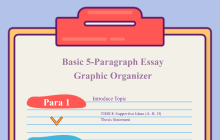
Basic 5-Paragraph Essay Graphic Organzier
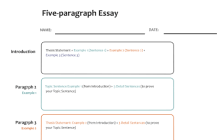
5-Paragraph Essay

Expository Essay Graphic Organizer
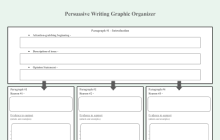
Persuasive Essay Graphic Organizer

Essay Graphic Organzier
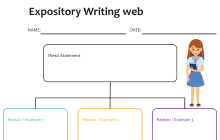
Narrative Essay Graphic Organizer
Example 1: 5 Paragraph Essay Graphic Organzier
The most common type of essay writing format is a 5-paragraph essay. Essay graphic organizer for writing helps organize all those 5 paragraphs and insert valuable information inside them. It includes the first paragraph section in which the writer inserts the topic sentence and at least three thesis statements. The upcoming three paragraphs briefly summarize those statements and provide at least three pieces of evidence for each thesis. Finally, the last paragraph repeats the main statement and includes an overall concluding statement. Moreover, every thesis detail includes a conclusion statement that conceives the entire concept.

Example 2: Printable 5 Paragraph Essay Graphic Organizer
It is also the type of essay organizer writers use to organize the outline of a 5-paragraph essay format. Its first paragraph is of introduction which includes with a thesis statement instead of a topic sentence. The statement inside the paragraph includes three supporting examples with itself. Moreover, the second paragraph has a topic sentence that the previous thesis supports. Plus, it has individual evidence details that prove the topic sentence true. The third paragraph includes a thesis statement that correlates with the previous and upcoming topic sentence. Finally, the last paragraph has the essay's main idea and a concluding statement that proves the point.

Example 3: Argumentative Essay Graphic Organizer
This template solemnly deals with the expository template of the essay. It focuses on the essay's three most basic parts: the introduction, body, and conclusion. Moreover, the writer evaluates the selected topic in it with examples and evidence and closes the argument clearly and concisely. The exemplary diagram includes 2 separate boxes in the introduction sections. One of them is for the hook that engages the audience, whereas the other depicts the essay's main idea. Inside the body section, the writer briefly lists three examples, each with individual supporting details. Finally, the conclusion includes two sections; one for reviewing and rewriting the central concept and the other to input the closing details of the essay.

Example 4: Persuasive Essay Graphic Organizer
This example diagram of the essay graphic organizer for writing helps to persuade a general or specific audience toward your point of view. The primary purpose is to enlist your opinion and evaluate it with the help of numerous supporting details. As for the organizer, it is for a 5 paragraph format. The first one has an engaging beginning, a summary of the issue, and your opinion. Furthermore, the next 3 provide different reasons that support your opinion. Moreover, the section also includes evidence in the form of examples and textual details that support every reason individually. The last paragraph is a conclusive one that restates the opinion, summarizes all three reasons again, and gives a CTA (call to action) at the end. However, you can ditch the CTA and add a simple closing statement that supports your opinion.

Example 5: Informational Essay Graphic Organizer
This type of organizer is for essays having more than one main idea. The organizer's interface has several colors that make it engaging and appealing. Due to the color, it is referred to as a Rainbow essay organizer. A big individual box includes the whole organized outline of the essay. The writer has to briefly write all three ideas in it and support their point of view. Moreover, the organizer includes an introduction and conclusion description. At last, there is a final draft section that concludes the whole essay and supports either all three or one suitable main idea.

Example 6: Narrative Essay Graphic Organizer
The expository essay is a genre that requires the student to investigate an idea, evaluate evidence, expound on the idea, and set forth an argument concerning that idea clearly and concisely. The below expository essay web diagram is created using EdrawMax Online and shows blank spaces for Thesis Statement, Example 1, Example 2, Example 3, Details about all the examples, and argumentative points. Expository writing gives facts and information about a topic, and as the web diagram suggests, a good expository essay introduces the main idea and develops it with facts and supporting details.
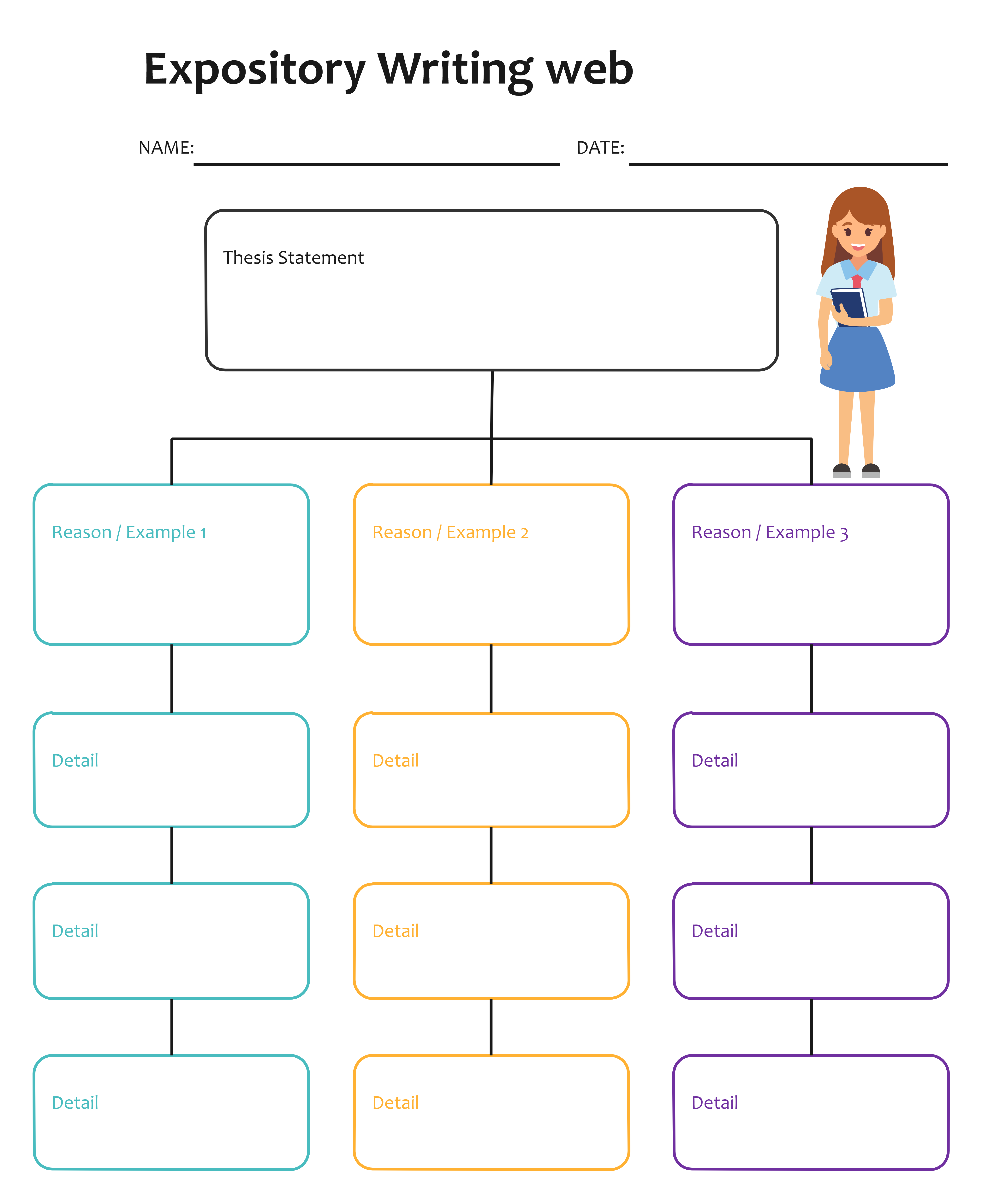
3. How to Make an Essay Graphic Organizer
Graphic organizers are the modern way of learning. With passing time, people are using them in every type of write-up. Therefore, it is better to understand its production process so that you can make one specifically for your essay. The online production software uses four simple steps to generate a graphic organizer for essays.
Step 1 - Head on to EdrawMax Online or download EdrawMax . Make an account and log in to it.
Step 2 - Once inside, you can start creating the graphic organizer on a blank edit sheet or readymade essay organizers, such as mindmaps and spider maps. However, this process is time-consuming. If you want an easy solution, head to the main menu on the left, look for Templates Community , and click on it.
Step 3 - Clicking on the Template Community option will take you to a social network of designers and a general audience like you that post templates daily for public use. You can search for your very own template and duplicate it onto your sheet using the button Duplicate.
Step 4 - Finally, start customizing it as you like. You can change the font, color, and components. Moreover, you can add new ones if you like. Once you are done and satisfied, export and share your template with others using the Button Publish present on the top right corner.
4. Online Graphic Organizer Maker
Traditional ways are gone when you had to work extensively for a simple diagram in lining software. Online graphic organizers like EdrawMax made graphic organizer designing much easier and less time-consuming. All thanks to its easy-to-use interface and basic yet helpful tool kits, designing a diagram is possible for every individual with basic knowledge.
Moreover, EdrawMax saves a lot of effort and time with the help of readymade templates. This online graphic organizer maker is suitable for any type of consumer to generate any variation of the graphic organizer. Its biggest pro is the Templates Community , with thousands of readymade templates for users. In this social biome, you can not only pick the one that suits you well but share your ideas with the community as well.
5. Key Takeaways
The visual aid of essay graphic organizers helps the writers to organize their researched facts and general thoughts according to references. Moreover, it gives a direction to the audience and the writer for the essay. As for its usage, the writers are helping themselves with it in their professional careers. Moreover, it proves exponentially efficient in the academic field for students. When it comes to essay writing, it helps in both of these by establishing a relevant and valid connection. Plus, communicating our thoughts with visual sketches and doodles is less boring and more engaging.
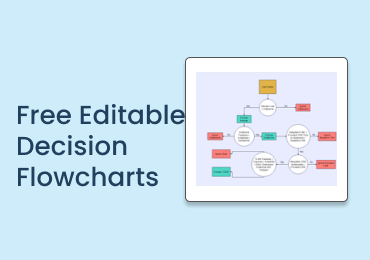
Free Editable Decision Flowcharts
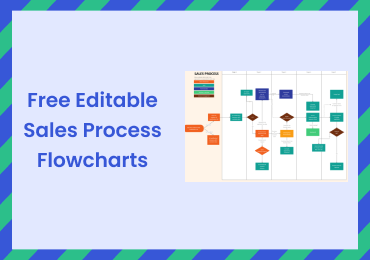
Free Editable Sales Process Flowcharts

Free Editable Flowchart Infographic Examples

Free Editable Sports Infographic Examples

Free Editable Roadmap Infographic Examples
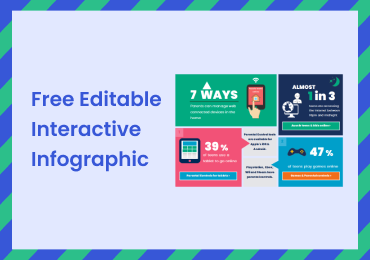
Free Editable Interactive Infographic Examples


IMAGES